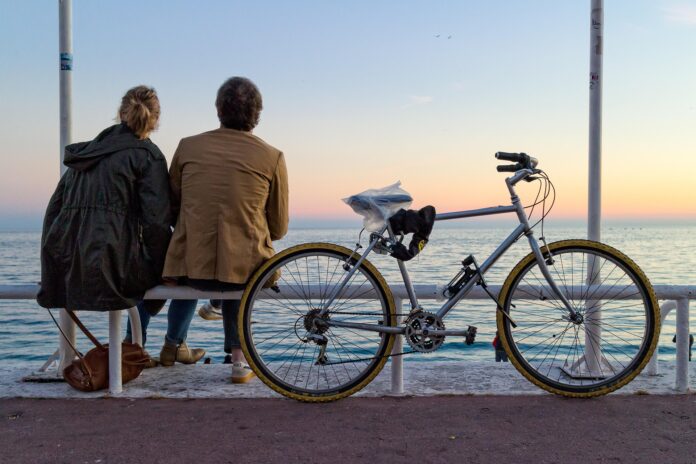The national bicycle survey reveals progress in Nice and Cagnes-sur-Mer, but users still point out significant shortcomings. Participatory maps highlight priority routes and the need for secure parking facilities.
The Baromètre Vélo 2025, published by the French Federation of Bicycle Users (FUB), presents a mixed overview of cycling practices in the Alpes-Maritimes. With more than 334,000 participants nationwide, it is the world’s largest citizen consultation on cycling conditions. In Nice, the responses show, for the first time, an improvement in the overall perception. The city moves from an F grade to an E, still considered unfavorable, but slightly improved.
The association Nice à Vélo, a member of the FUB, highlights that this change reflects a 19% improvement in cyclists’ perception over two years. This progress, however, remains limited compared to expectations. Antonio Barros, an administrator of the association, recalls that “it took eight years to move up just one level,” calling for “accelerating the deployment of secure routes.”
Surveyed cyclists acknowledge some progress. Recent developments on Gambetta Sud, Buffa, Cassini, and the north-south axis Auguste Raynaud – Congrès are praised for their quality and comfort. However, numerous issues remain. Safety at intersections, protection for children and seniors, and the consideration of detours during construction work are still deemed very insufficient.
Parking is the best-rated category, but the end of the Vélobleu service in favor of private operators has worsened the perception of rentals. Additionally, there is the recurring problem of illegal parking on bike lanes.
Participatory maps highlight particularly critical red zones. Rue Barla, the heart of the Promenade du Paillon extension project, illustrates the tensions: despite reduced traffic, no bike lane is planned there. Boulevard Carabacel, despite winning national funding in 2019, saw its project abandoned, prompting a petition with over 3,000 signatures. The Intersection of Magnan is also cited as dangerous and lacking facilities.
The map also reveals a massive demand for secure parking facilities. Place Garibaldi, avenue Jean-Médecin, place Masséna, Thiers station, Riquier station, and the port are among the areas where cyclists seek suitable equipment. According to Nice à Vélo, “without enough bike racks or secure storage, many hesitate to use bicycles for their daily commutes.”
Cagnes takes the lead, Saint-Laurent and Villeneuve struggle
Among the municipalities of the Metropolis, Cagnes-sur-Mer achieves the best grade with a D, described as “moderately favorable.” After a decline in 2019 and 2021, the city returns to its 2017 level. Participation is steadily increasing, which reflects growing residents’ involvement. Users appreciate certain improvements, like the Tilleuls alley or the Garigliano passage, but the seafront and several key routes are still considered priorities.
Local representatives of Nice à Vélo emphasize the need to secure continuous routes. The municipal decision to impose a maximum speed of 10 km/h on the seafront is particularly criticized, as it is deemed incompatible with daily bicycle use.
In Saint-Laurent-du-Var, the Barometer reveals stagnation. The municipality maintains an F grade, reflecting an unfavorable perception. The number of responses remains stable, but the evolution score drops by 14%, indicating a perception of regression. Criticisms focus on safety, particularly on General Leclerc avenue and the Coastal Road. Residents note few improvements, but ongoing projects, such as a structured lane on General de Gaulle avenue, could change the trend in the coming years.
Outside the Metropolis, Villeneuve-Loubet experiences a strong increase in participation. The municipality moves from a C to a D grade, but the perception of evolution remains positive (+22%). The involvement of cycling employees from the Bel Air district significantly boosted participation. Residents demand continuous links to Cagnes and the village, as well as secure parking, which is considered too rare in the center and the seafront.
A Clear Demand for Continuous Infrastructure
The Baromètre Vélo 2025 illustrates a dynamic in motion in the Alpes-Maritimes. Residents acknowledge some improvements but express a strong expectation: to have secure, continuous, and suitable routes for daily commutes. The red zone maps confirm that needs focus as much on safety as on network coherence.
Nice and its metropolis lag behind other more advanced French territories. But the increase in the number of participants and growing interest from citizens demonstrate genuine engagement. For associations, the challenge now is to accelerate projects and move from occasional developments to a comprehensive cycling mobility strategy.


